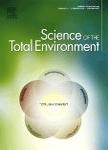版权所有:内蒙古大学图书馆 技术提供:维普资讯• 智图
内蒙古自治区呼和浩特市赛罕区大学西街235号 邮编: 010021

作者机构:Peking Univ Coll Environm Sci & Engn State Key Joint Lab Environm Simulat & Pollut Con Beijing 100871 Peoples R China
出 版 物:《SCIENCE OF THE TOTAL ENVIRONMENT》 (整体环境科学)
年 卷 期:2016年第560卷
页 面:62-72页
核心收录:
学科分类:0830[工学-环境科学与工程(可授工学、理学、农学学位)] 08[工学]
基 金:Environmental Protection Ministry of China [2011467003, 20130973] Natural Science Foundation Key Project "Development and validation of emission inventories of anthropogenic volatile organic compounds in the Beijing-Tianjin-Heibei region, China"
主 题:VOCs Source apportionment Vehicular emissions Biomass burning Evolution process
摘 要:108 ambient volatile organic compounds (VOCs) were measured continuously at a time resolution of an hour using an online gas chromatography-frame ionization detector/mass spectrometry (GC-FID/MS) in October 2014 in Beijing, and positive matrix factorization (PMF) was performed with online data. The evolution process and causes for high levels of VOCs during a haze event were investigated through comprehensive analysis. Results show that mixing ratios of VOCs during the haze event (89.29 ppbv) were 2 to 5 times as that in non-haze days, There was a distinct accumulation process of VOCs at the beginning of the haze event, and the mixing ratios of VOCs maintained at the high levels until to the end of pollution when the mixing ratios of ambient VOCs recovered to the normal concentration levels in a few hours. Some reactive and toxic species increased remarkably as well, which indicates a potential health risk to the public in terms of VOCs. Eight sources were resolved by PMF, and results revealed gasoline exhaust was the largest contributor (32-46%) to the ambient VOCs in Beijing. Emissions of gasoline exhaust surged from 13.46 to 40.36 ppbv, with a similar variation pattern to total VOCs, indicating that high levels of VOCs were largely driven to by expanded vehicular emissions. Emissions of biomass burning also increased noticeably (from 2.32 to 11.12 ppbv), and backward trajectories analysis indicated regional transport of biomass burning emissions. Our findings suggested that extremely high levels of VOCs during the haze event was primarily attributed to vehicular emissions, biomass burning and regional transport, as well as stationary synoptic conditions. (C) 2016 Elsevier B.V. All rights reserved.